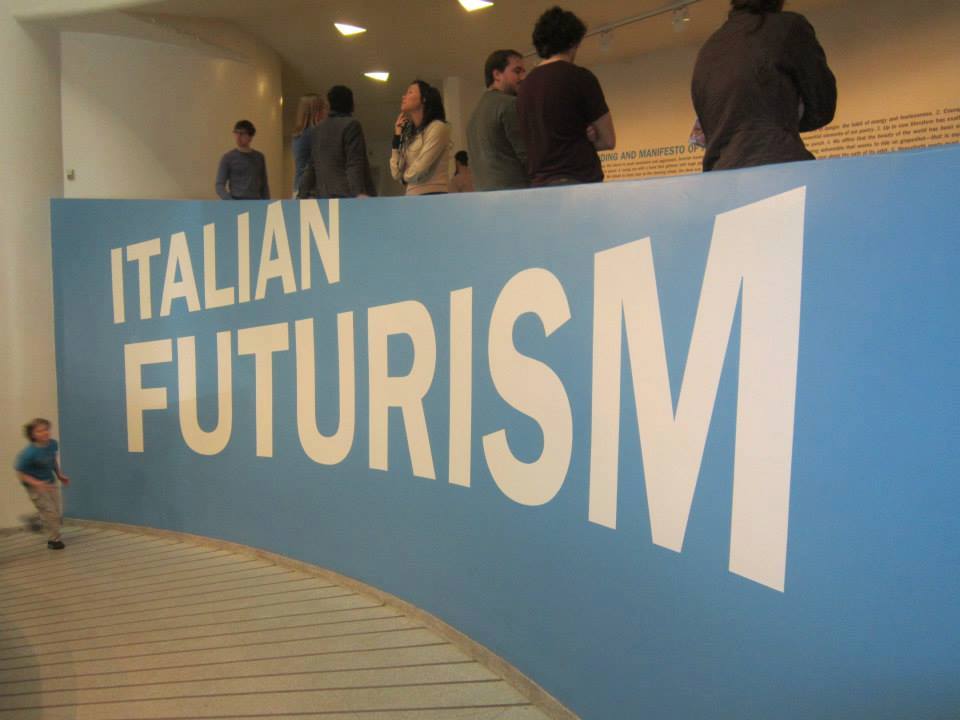In the lexicon of critical clichés, “bracing” is the one I would choose to describe the Guggenheim’s ITALIAN FUTURISM, 1909–1944: RECONSTRUCTING THE UNIVERSE. I was startled, as if awakened, by its spiraling coherence and aesthetic range, and loved the byways down which it made me wander, including into the actorless kingdom of Futurist theater. I would not add that the exhibit is, in itself, “unflinching,” but I will say that it doesn’t whitewash or evade the movement’s patriarchal ideology or fascistic sympathies. Indeed, it is fascinating to look at the militaristic paintings and murals that some of its members produced for Mussolini; that they are nakedly aggressive, that there is nothing to be done to satisfy the impulses they contain except to invade and conquer, is almost refreshing. Compared to our own patriotic artworks, they seem – now I will use the word – “unflinchingly” honest; there’s no hiding behind notions of “defense”; the Futurist soldier is about territorial advancement and unapologetic domination. There is nothing noble about that, indeed it is despicable, but it cannot be said to obfuscate.
The Futurists celebrated dynamism, technology, drive, and, above all, masculinity; there were among their number few women, whose sex was, at least rhetorically, disdained. I say “at least rhetorically” to avoid accepting the gender essentialism upon which the writings of F.T. Marinetti, the movement’s founder and chief polemicist, depend. I would prefer to let stand the absurdity of his call for the abolition of such effeminate avocations as pasta eating and tango dancing, or, oddly enough coming from a fascist, Wagnerian opera (to be fair, he is given credit in a curatorial note for speaking out against anti-Semitism). Still, it is discomforting that, for those of us who draw spiritual energy from the arts, the creative vigor of an innovative aesthetic can distract from its embedded ideology or the worser uses to which it can be put.
It is vivifying, even if discomfiting, that the Futurists perceived, years before the internet, how new technologies alter human perspective and, it is not too much to say, consciousness. In their architectural renderings we see prefigured the postmodern city; in their cookbooks the aroma courses and artful platings of contemporary cuisine; in their daredevil views from the cockpits of airplanes the cinematic swoop of a Kubrick, a Lucas, or a Spielberg. No artistic movement, not even Dada, has so put the finger in the eye of official culture or tapped the potential of the manifesto as an exemplar of the values it propounds. Add the ‘60s happening, the participatory theater, installation art, and deconstructive criticism to the roll call of what Italian Futurism anticipated and perhaps made possible: who else has set the viewer so clearly at the center of the aesthetic experience? What’s done is done and cannot be undone, which excuses nothing and begs a sharper moral eye upon the arts of the present. But if ever a case has been made for an artistic movement as seminal, this exhibit does it, however much its founders might have hated its happening in, of all places, a museum.
For information about exhibits at the Guggenheim, click here.
